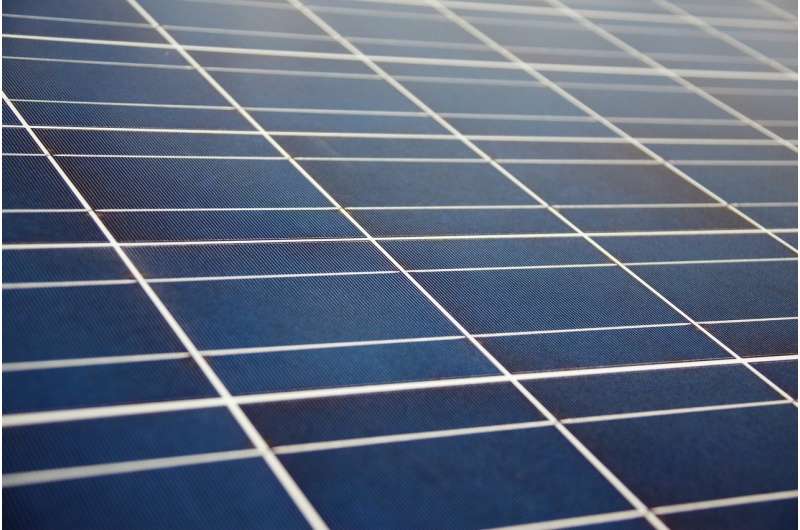Researchers develop strain relaxation for stable quasi-2D perovskite solar cells

The harvesting of solar energy has received extensive attention. Among all the light harvesting devices, perovskite solar cells (PSC) stand out in the photovoltaic field due to their advantages, including good photovoltaic properties, low cost, and easy processing. As the result of decades of research, the power conversion efficiency of PSC has reached the standard of commercialization. At present, the main obstacle to its further development is the unsatisfactory stability under external stress.
Recently, Prof. Zhou Huiqiong’s group from National Center for Nanoscience and Technology (NCSNT) of the Chinese Academy of Sciences (CAS) has developed a strain relaxation strategy to study the effect of residual strain on properties of quasi-two-dimensional (2D) perovskites. The related research results were published online in Angewandte Chemie International Edition.
The introduction of hydrophobic spacer cations makes quasi-2D perovskites more stable compared with traditional 3D perovskites, but the stability of perovskites remains unsatisfactory. Residual strain is closely related to the crystallographic properties, which in turn can significantly affect the photovoltaic properties and stability of perovskites.
The researchers investigated the residual strain in quasi-2D perovskite with mixed spacer cations by X-ray diffraction (XRD) and atomic force microscope (AFM). They found that there is severe tensile strain along the out-of-plane direction in pristine perovskite film, leading to poor crystallinity and insufficient stability issues. With an appropriate composition of spacer cations, the tensile strain is effectively released.
In summary, optimizing the spacer cations could regulate the residual strain in quasi-2D perovskite, further improving the intrinsic stability of perovskites. This work provides a feasible strategy for regulating the photovoltaic properties and improving the stability of perovskite-based photovoltaic devices.
Qian Cheng et al, Impact of Strain Relaxation on 2D Ruddlesden‐Popper Perovskite Solar Cells, Angewandte Chemie International Edition (2022). DOI: 10.1002/anie.202208264
Citation:
Researchers develop strain relaxation for stable quasi-2D perovskite solar cells (2022, July 15)
retrieved 15 July 2022
from https://techxplore.com/news/2022-07-strain-stable-quasi-2d-perovskite-solar.html
This document is subject to copyright. Apart from any fair dealing for the purpose of private study or research, no
part may be reproduced without the written permission. The content is provided for information purposes only.
For all the latest Technology News Click Here
For the latest news and updates, follow us on Google News.
